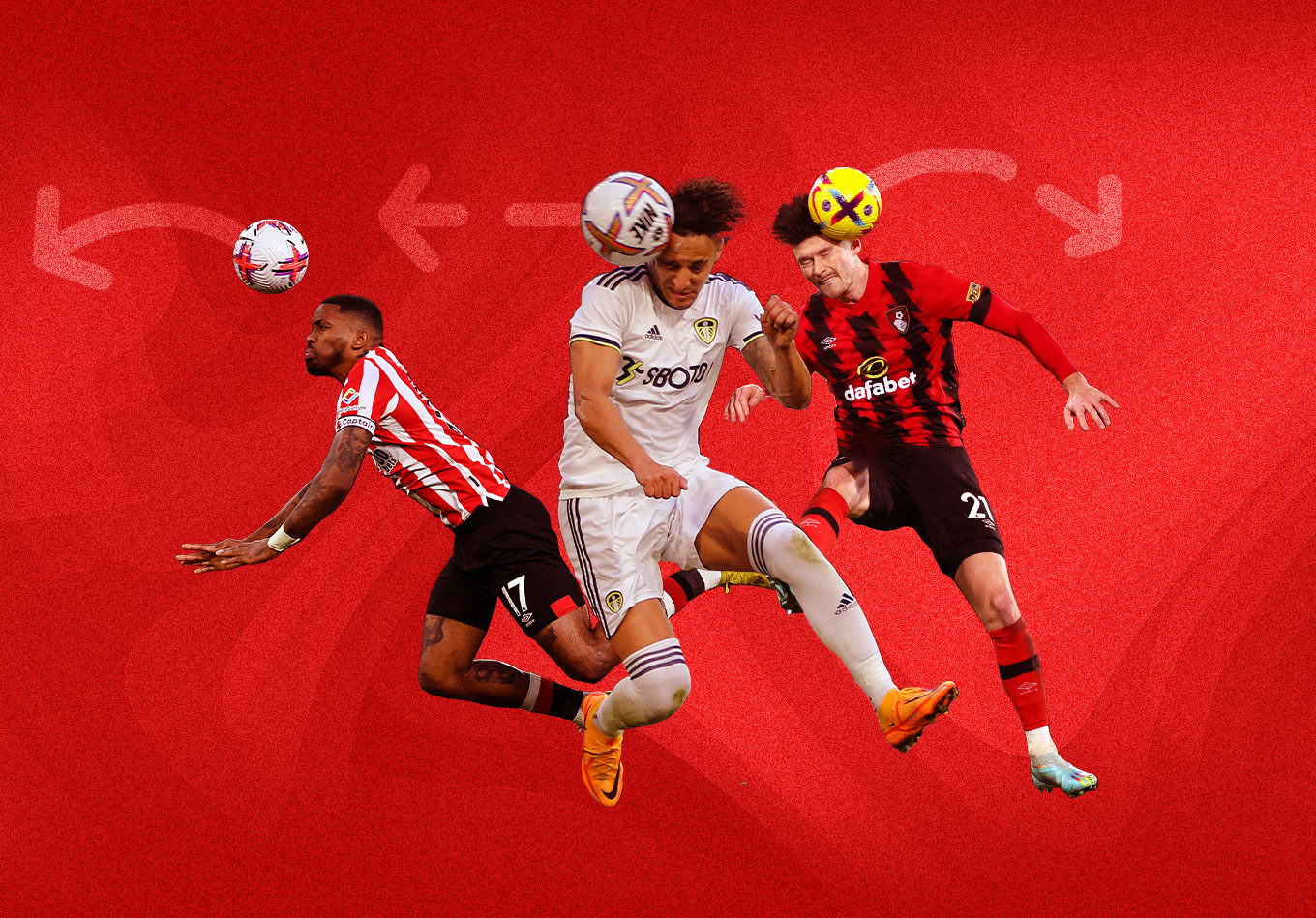“Mellor. Lovely, cushioned header… FOR GERRARD”
It’s a phrase that has entered Liverpool (and football) folklore, harking back to a time when Martin Tyler was seemingly still excited by commentating on the game.
He’s not wrong, though. Neil Mellor’s header to tee up Steven Gerrard’s thunderous strike was lovely, and it was cushioned.
Without Mellor’s involvement, the goal never gets scored. We never get to hear Andy Gray’s “ya beauty” or his “what a hit, son.” Perhaps Liverpool don’t go on to beat Olympiakos by the two-goal margin they need. And perhaps we are denied the greatest Champions League final ever.
So, Mellor’s rather agricultural assist for Gerrard’s strike was priceless. It was just as important as any glorious arching through ball that splits a defence in two, or a pinpoint cross that perfectly finds an onrushing attacker. Sure, a headed pass might lack the same aesthetic beauty, but it is no less effective and, arguably in some cases, is more difficult to execute.
Assists don’t have to be gorgeous to be effective. We’ve seen goals in World Cup, European Championship and Champions League finals that were set up with a much more functional type of pass. When Liverpool revealed what they consider to be their 130 greatest ever goals last summer, Gerrard’s strike against Olympiakos came in at number 12.
Creating Chances with Headers
1. The Lay-Off
But Mellor’s headed pass to Gerrard was something of a rarity, at least if the 2022-23 Premier League is any guide. His pass was likely classified as a lay-off, which is “a first-time pass away from goal when there is pressure on the passer (typically played by a forward) with one touch when they have their back to goal.”
There have only been 0.64 headed lay-offs per match on average in the top flight this season, with a completion rate of 73%. That’s notably below the accuracy in the high 90s you see for all backward passes, but it also raises perhaps the key takeaway from this study: doing football things with your head is really hard.
Where shots with players’ feet are converted at an 11.1% clip in the top flight this season, headed efforts have been put away 9.6% of the time. That difference is negligible compared to passing, though, with a shade under half of all headed passes successful this season when even the least accurate passing team in the Premier League has completed 73% of their efforts.
In this light, the success rate for headed lay-offs is actually pretty good, even though individual sample sizes remain almost microscopically small. There are only seven men to have attempted a minimum of five, and they are all number nines in some capacity.
From this group, just two have completed all of their headed lay-offs: Rodrigo and Erling Haaland. You know you can’t have an article about the 2022-23 Premier League without mentioning the Norwegian at least once, it’s contractual law.
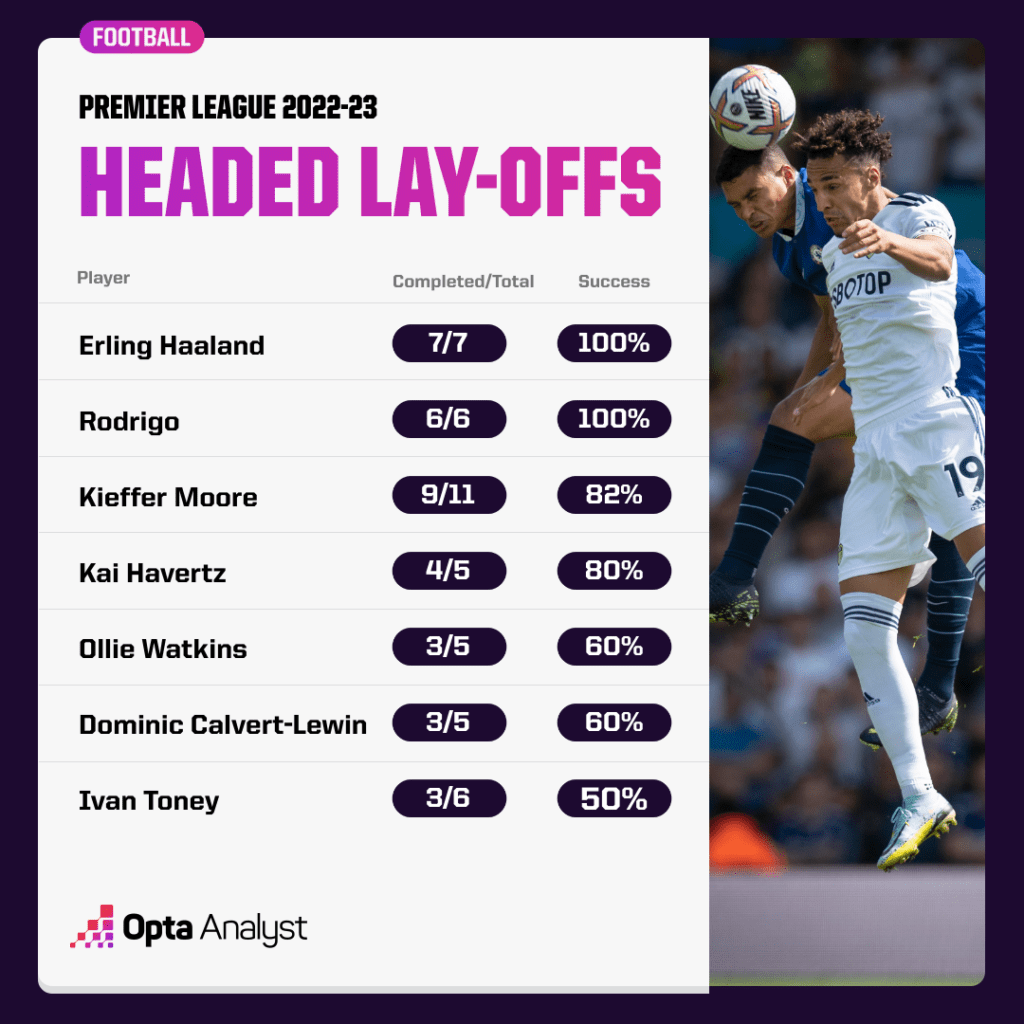
Despite having successfully marked almost all goal-related feats on his bingo card, Haaland has yet to assist a goal with a lay-off this season. In fact, there has been just one, with Ollie Watkins the man responsible. He teed up Jacob Ramsey in Aston Villa’s 3-0 win over Newcastle.
The potential for headed assists should not be dismissed too readily, even if only one has come via a lay-off. There have been 47 in total in 2022-23, which is more than have been delivered directly (without a touch between taking and scoring) from free-kicks (18) and more than corners have provided (40). No individual player has set up more than one goal with a headed pass but every team in the Premier League other than Crystal Palace have set a goal up via a header.
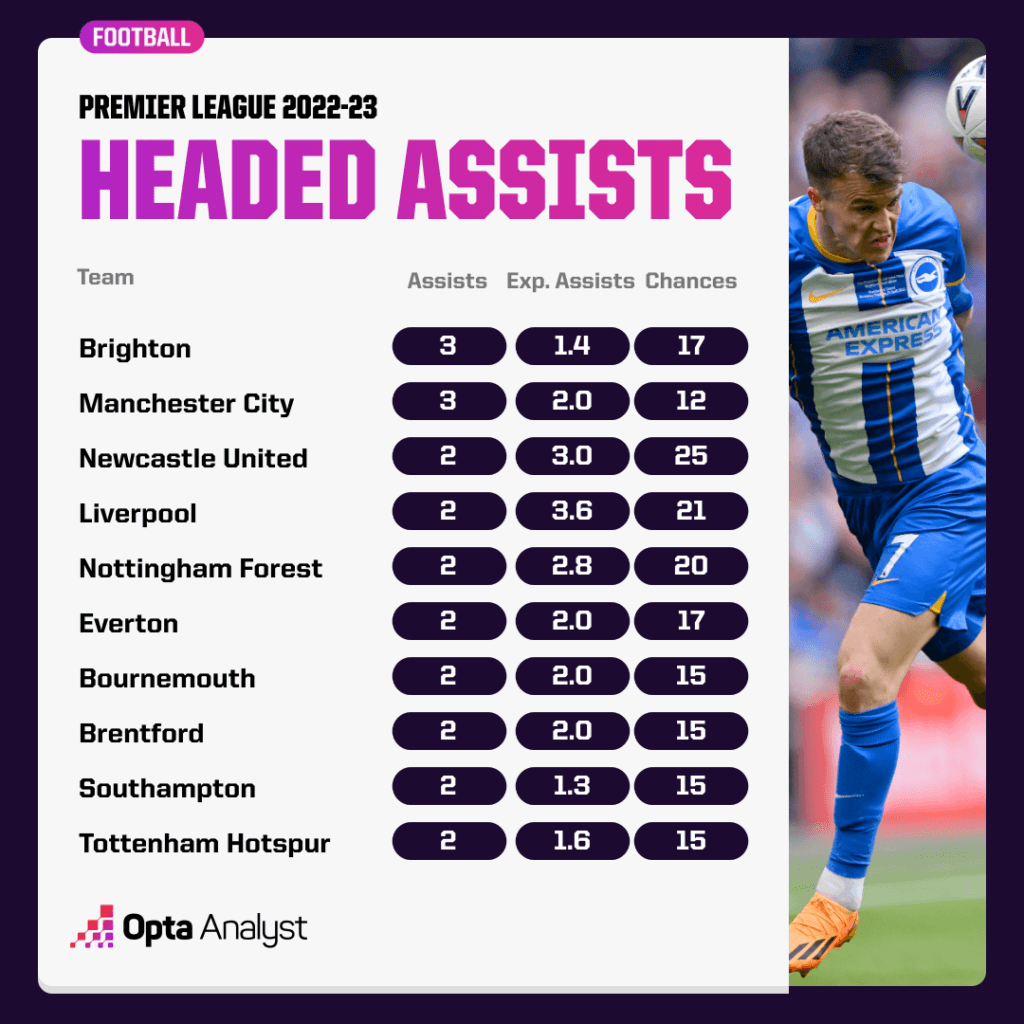
2. The Flick-On
While many headed passes can’t be neatly classified, flick-ons have posed a greater threat than lay-offs. These are defined as “a glancing pass with head or foot onto a team-mate where the ball is helped on in the same general direction.” They are much harder to complete – the success rate in 2022-23 is a lowly 26.4% – but there are almost four times as many accomplished per game.
The leaders for this type of pass are Brentford and Ivan Toney is their king. The England international has completed 35 flick-ons this season, over twice as many as any other player in the division, and has attempted 83, 26 more than Nottingham Forest’s Morgan Gibbs-White.
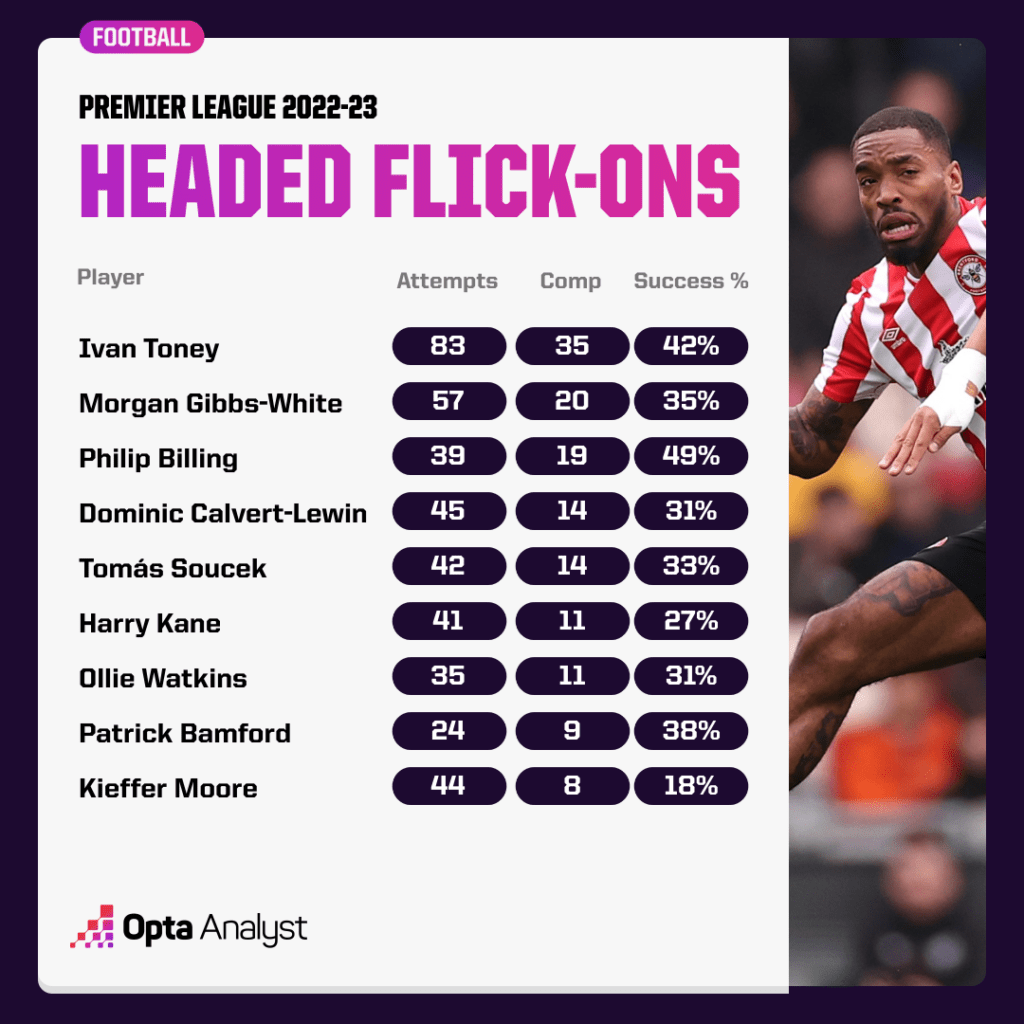
His dominance in this area means that Toney is inevitably responsible for the top flick-on combinations too. He has completed 15 such passes to Bryan Mbeumo and nine to Yoane Wissa, with one to the latter setting him up for a game-settling injury-time goal in the Bees’ 2-0 win at Southampton in March.
3. Headed Passing Combinations
A good example of a flick-on Toney’s assist may be, but it was atypical in two ways. The first of them is in terms of the positions played by the two players who linked up. To assess the passing combinations between players, we’ll stick to very broad classifications to provide decent sample sizes: goalkeepers, defenders, midfielders and forwards.
In pure volume terms, headed passes are most commonly played between defenders and midfielders. The likely explanation is that opposing teams play long balls forward that a member of the backline can get to first, and then head to a colleague in front of them.
But in terms of creating chances, it’s defenders passing to forwards who take first place. This will be thanks to tall centre-backs often being the intended target for set-piece deliveries; if they can’t score themselves, the least they can do is set up decent chances for their colleagues.
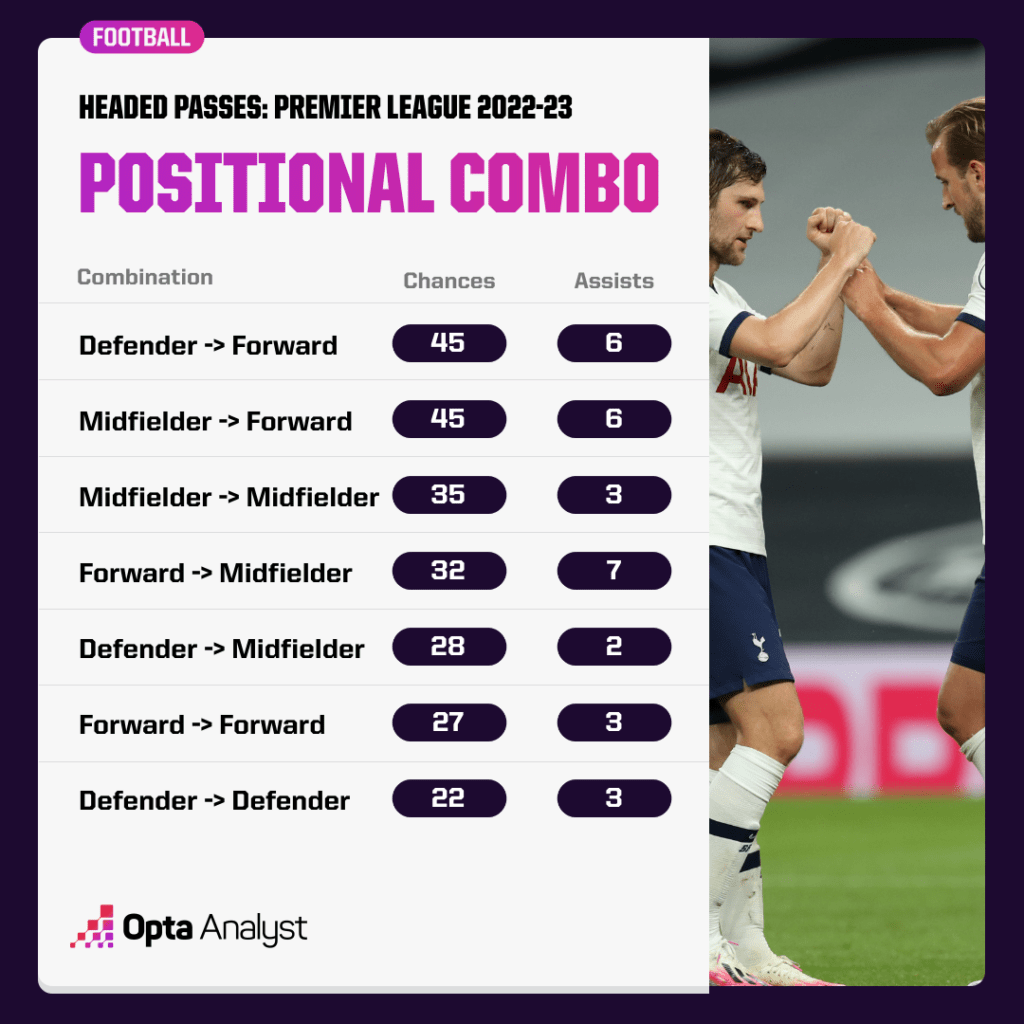
This was demonstrated by the leading combination for any positional breakdown, Ben Davies to Harry Kane. They were responsible for Spurs’ highest xG value chance – and their only Big Chance of the game – in their 1-0 win at Fulham in January.
Following a set play, the centre-back played a headed pass to the Tottenham talisman four yards from goal.
That they are the top duo with only two other chances created shows how hard it is to strike up deliberate relationships in this regard. It’s often about being alert and alive to the possibility when the ball is loose in the box.
The Toney to Wissa assist at St Mary’s was also unusual in respect of where on the pitch it took place. It’s safe to say there are not many goals created from headed passes that occur in the middle third of the field, even if that is the area that sees the highest proportion of the total (56.3%).
Looking at how the figures breakdown for different teams gives an insight into how they attack. While the correlation is far from perfect, it is interesting that the leading five teams for total headed passes contains the top three for the proportion that end in the attacking third.
It also is not a complete coincidence that those teams who play the highest percentage of their passes long – Brentford, Nottingham Forest and Everton – see their headed passes end in the final third more often than other sides. The early days of statistical analysis in football were marked by the idea that getting the ball forward quickly led to goals, and some teams still abide by this maxim.
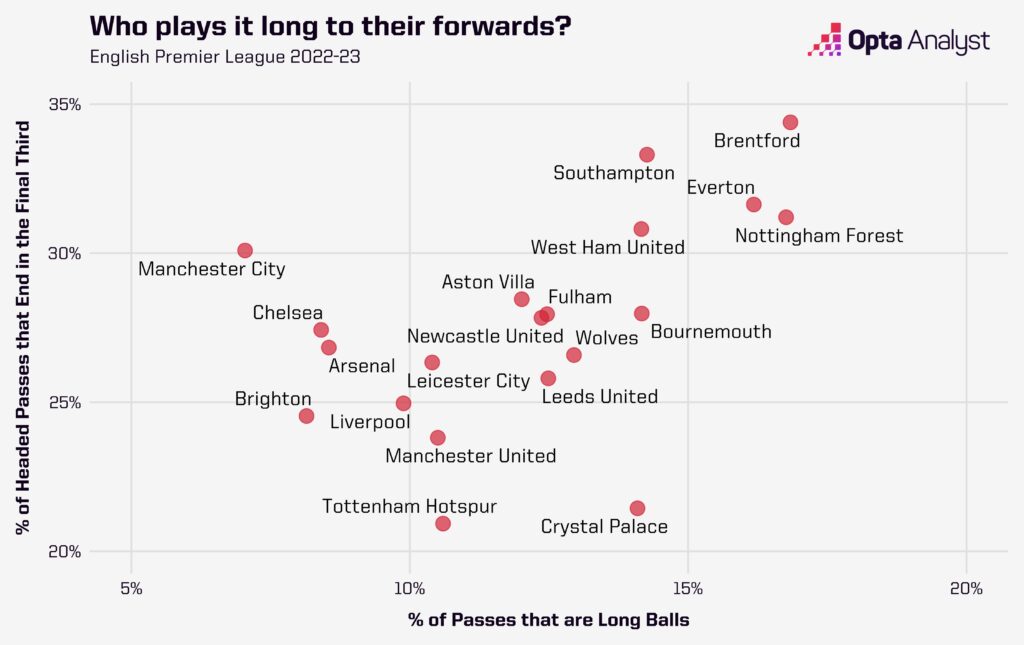
The likes of Charles Reep were obviously not working with the detailed data we have at our fingertips today, but the numbers make a decent case for headed passes.
The average chance created via a boot in the 2022-23 Premier League has an xG assisted total of 0.106 xG, which is 0.024 behind those created with a head. Put another way, chances that are assisted via a header have a 2.4% better chance of being scored, presumably due to the fact these shots are taken from closer to the goal.
Eleven teams have a better average for the latter than for chances created with feet.
Liverpool make for an interesting topical case study here. They top the table above for the average quality of a chance via a headed pass (0.199) – almost 20% of their shots teed up by headers result in a goal.
The chance with which Mohamed Salah opened the scoring against Brentford in the Reds’ 1-0 win last weekend was the highest xG chance created via a header all season. Virgil van Dijk nodded the ball across goal for Salah to convert from close range, even though he needed a second go at it.
Similarly, the chance with which Diogo Jota scored the opener in Liverpool’s 3-2 win against Nottingham Forest was the second-highest xG value headed key pass seen this season. It was also the Reds’ most valuable opportunity of the match and the best chance Fabinho has created in 2022-23.
While it didn’t find the net, there was a similar moment in the 96th minute of Liverpool’s 2-2 draw with Arsenal. Darwin Núñez created a chance rated at 0.56 xG for Ibrahima Konaté, and again it was both the Reds’ highest value (non-penalty) shot of the match and the creator’s best effort of the season. The same was true for Stefan Bajčetić in the 0-0 Anfield draw with Chelsea, on a personal level if not for the team on the day.
For players, and even some teams, the sample sizes for chance-creating headed passes are small. But the fact remains that 14.0% of them have become assists when the average for all chances, in general, has been 9.9% this season, showing their qualitative advantage.
Glamorous, eye-catching and heart-warming they are not, but it’s time to give headed passes the respect they deserve.
Enjoy this? Subscribe to our mailing list to receive exclusive weekly content. And follow us on Twitter too.
